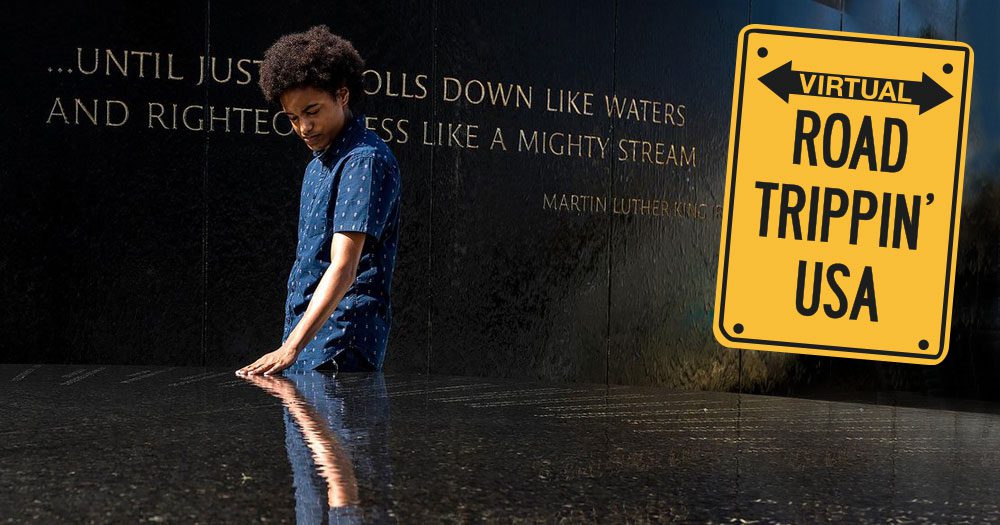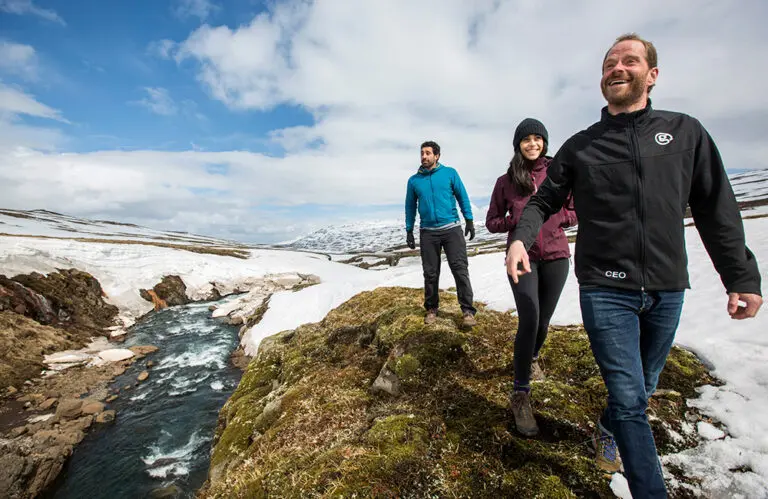Step back in time and in to the brave stories of those who fought for Civil Rights in this fascinating Road Trippin’ USA itinerary. This journey through Tennessee, Mississippi, Alabama and Georgia will give you insight into the real meaning of equality and freedom for so many.
“The Civil Rights History Trail” is a powerful road trip, venturing through four states with a history of oppression, bravery, unity, and change.
On the journey, you will hear stories and pay respect to those who stood up for injustice and the right to live peacefully and freely.
If you don’t believe you have the power to make a positive difference in the world, this eye-opening road trip will make you rethink that sentiment and remind you of the strength of humanity.
So, if you’re ready to start planning the civil rights history field trip of your life once international borders reopen, this article is a great place to begin.
Explore all of Brand USA’s 31 Amazing Self Drive Road Trip itineraries here.
The Civil Rights History Trail: Route Highlights
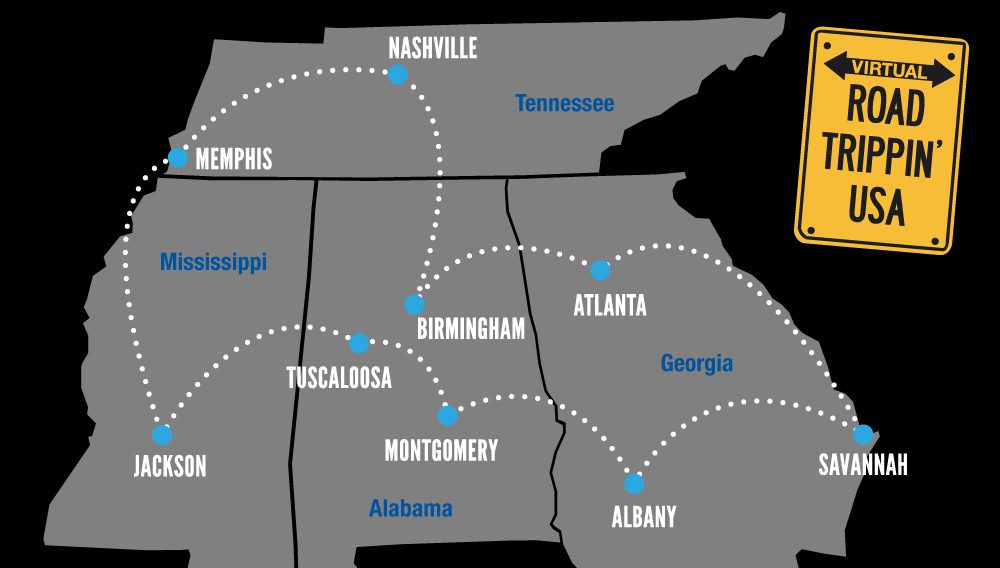
1. Nashville, Tennessee
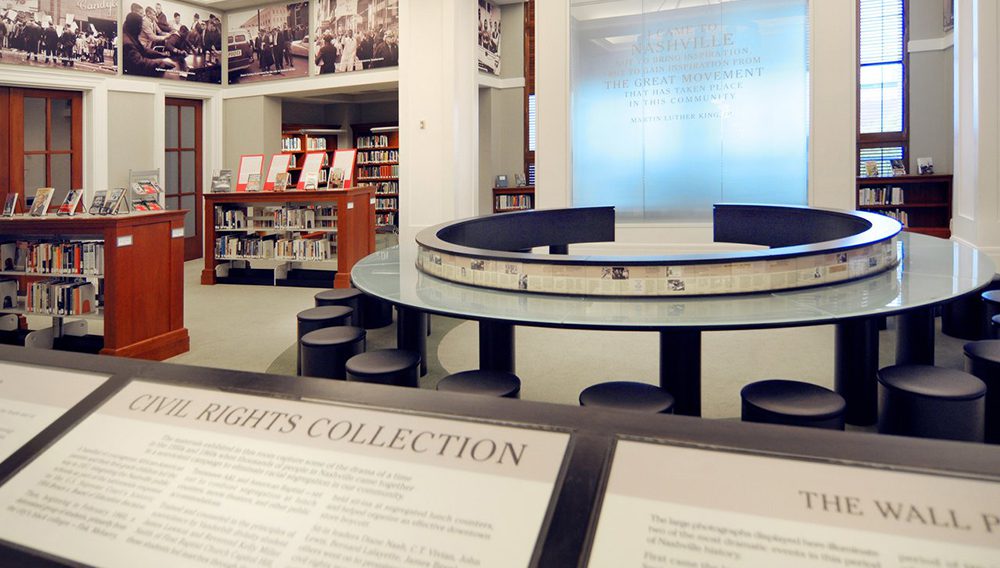
Begin your journey at Woolworth on 5th, a restaurant that pays homage to the Nashville sit-ins – nonviolent protests against segregated public places in the city in 1960.
Learn more about the era by sitting at a symbolic lunch counter to read the sit-in protesters’ Ten Rules of Conduct and other historical accounts in the Civil Rights Room at the Nashville Public Library.
Next up, visit the Davidson County Courthouse, where a peaceful march ended with then-Mayor Ben West conceding that segregation was immoral, the first step toward the city’s desegregation of public facilities.
Next to the courthouse are the Witness Walls, concrete murals featuring events, including Freedom Rides, marches and sit-ins, that spurred desegregation in Nashville.
2. Nashville, Tennessee > Henning and Memphis, Tennessee
Once you’ve taken in all there is to do in Nashville, drive for an hour and stop in Henning to visit the Alex Haley Museum and Interpretive Center.
The museum – the childhood home of the “Roots” author (a book turned TV mini-series which captivated the world in the ’70s) – is dedicated to African-American history and contains a life-size replica of a slave ship, which conjures up all kinds of incredibly powerful emotions.
Once you’ve pondered what went on, continue an hour more to reach downtown Memphis, set on the Mississippi River.
Venture to the Burkle Estate, known as the Slave Haven Underground Railroad Museum, once part of the Underground Railroad network, which helped people escape slavery.
The main feature is the dark cellar, where men and women hid for hours or days until riverboats were available to take them to safety and freedom in northern states.
These experiences will open your eyes to both the horror and the humanity that was going on during these transformational times.
- TRAVEL TIME: 341kms: 3 hours drive time
3. Memphis, Tennessee

Welcome to Memphis.
To deep-dive into the history of civil rights in Memphis, begin at the National Civil Rights Museum, constructed around the Lorraine Motel.
Here, you will learn about key milestones in civil rights history, including Rosa Parks’ refusal to give up her seat on a segregated bus, Jim Crow segregation laws and the assassination of civil rights leader Martin Luther King Jr. outside his room at the Lorraine Motel.
Next up, a visit to Beale Street. This is the heart and soul of the city’s African American culture, and now the entertainment hub for live music and great dining.
For something a little more upbeat after the heaviness of history, the Stax Museum of American Soul Music is a celebration of everything from church Gospel music to uplifting anthems that were the backbone of marches, giving hope to those fighting for civil rights.
Other must-see places in Memphis include the historic Beale Street Baptist Church and The Four Way, where you can order some hearty soul food, following the footsteps of civil rights activists as well as famous musicians such as B.B. King and Aretha Franklin.
4. Memphis, Tennessee > Oxford, Sumner, Money, And Jackson, Mississippi
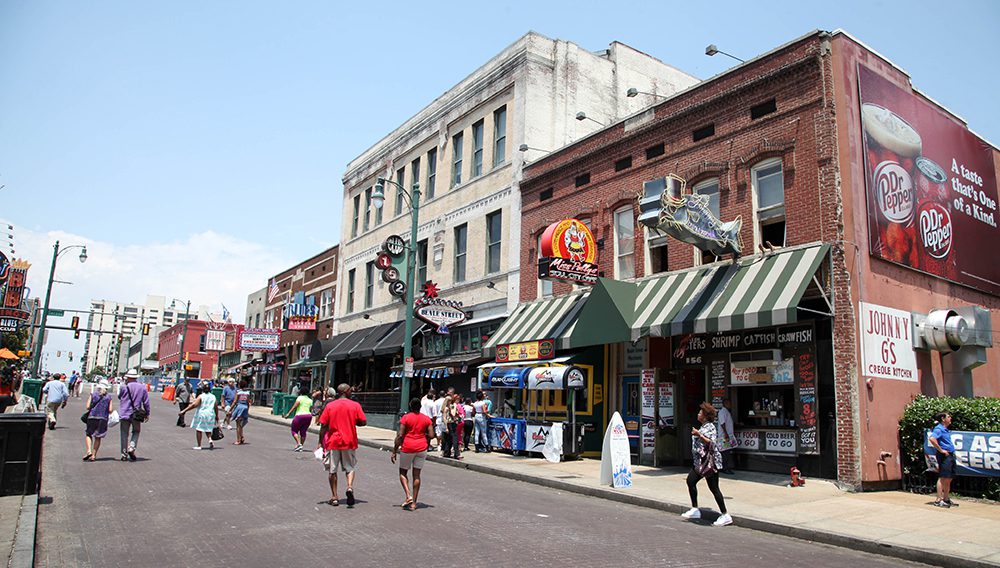
Jump in your car and drive about 90 minutes south of Memphis, where you can stop at the Oxford campus of the University of Mississippi and seek out the civil rights monument created by Oxford resident Rod Moorhead.
Then, continue your journey with the drive to Jackson, which follows the 1966 “March Against Fear” route that protested racism and the fear that kept black people from registering to vote.
In Money, all that remains of Bryant’s Grocery & Meat Market is the ruin of the storefront, but this is where Emmett Till, a 14-year-old from Chicago, Illinois, was accused of whistling at Carolyn Bryant, the 21-year-old white shopkeeper while purchasing candy.
Bryant’s husband and his half-brother abducted Emmett, beat and shot him, then threw his body into the Tallahatchie River.
The ensuing public outcry following this savage attack is credited with igniting the civil rights movement.
Go to Sumner to see the Tallahatchie Courthouse, where the murder trial took place and both men were acquitted, then drive about two hours south to reach Jackson.
- TRAVEL TIME: 337kms: 3 hours drive time
5. Jackson, Mississippi
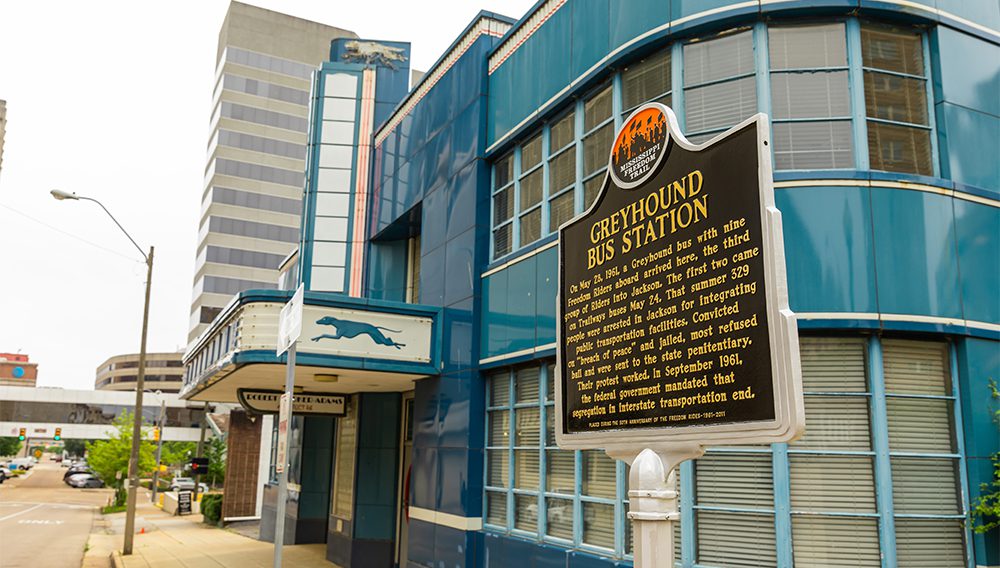
Begin this leg of your journey at the Mississippi Civil Rights Museum.
Here, view archive film of protests and demonstrations as well as artefacts such as the rifle used to murder Medgar Evers at his home in 1963.
The NAACP field secretary’s house has been restored and is now the Medgar Evers Home Museum.
North of Jackson, visit Tougaloo College. The historically black college was a hub of support for the civil rights movement, leading to the boycott of many Jackson businesses, protests against segregation and peaceful sit-ins.
The Greyhound bus station on Lamar Street, which has since been restored, was the catalyst for the Freedom Rides throughout the South after the arrests in 1961 of 27 riders who challenged racial segregation.
6. Jackson, Mississippi > Philadelphia, Mississipi and Tuscaloosa, Alabama
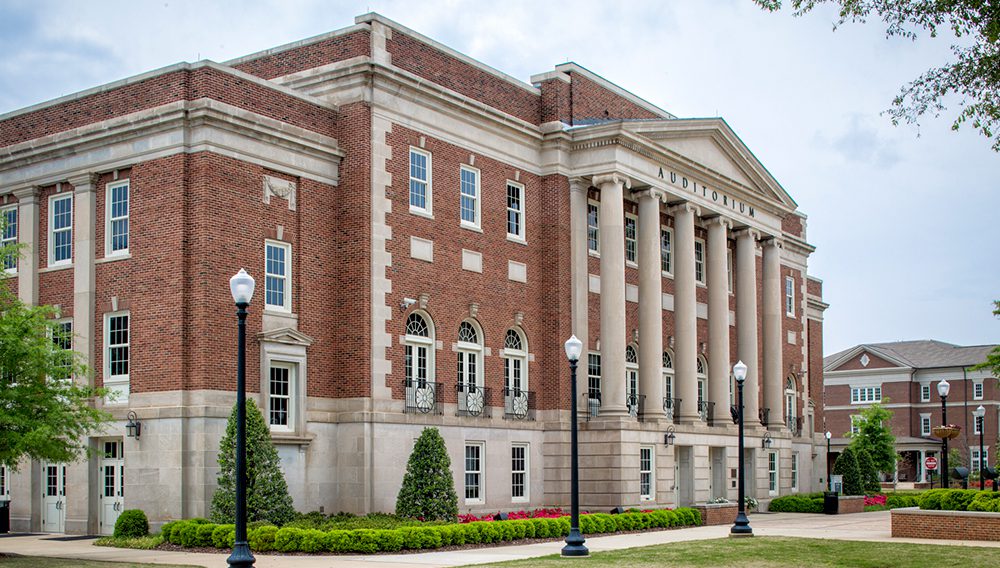
Jump in your car and make your way to Philadelphia.
Here you’ll find the site of the 1964 killings of three civil rights activists, one African-American man and two white men, which became known as the Mississippi Burning murders.
The national headlines for these atrocious events were what provided the final push to pass the 1964 Civil Rights Act.
Once you’re done, continue to Tuscaloosa, where then-Alabama Gov. George C. Wallace stood at the entrance of the University of Alabama in 1963 to block the admission of two black students, determined to keep his promise for the university to remain segregated.
President John F. Kennedy intervened, dispatching troops to protect the students, allowing them to enrol and sending a message to segregationists across the South.
Known as the site of the “Stand in the Schoolhouse Door” incident, the university’s Foster Auditorium became a National Historic Landmark in 2005.
- DRIVE TIME: 299kms: 2 hours and 45 mins drive time
7. Tuscaloosa, Alabama > Selma, Alabama > Montgomery, Alabama
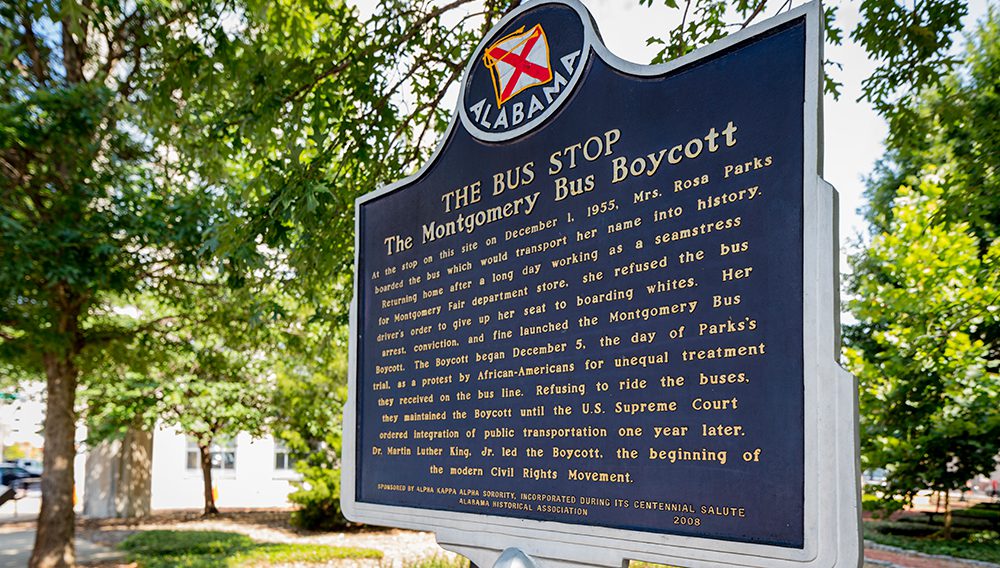
Selma is the starting point of three 1965 right-to-vote marches.
On March 7, about 600 marchers were met with violence from local law enforcement and vigilante gangs. News broadcasts countrywide of “Bloody Sunday,” coupled with the death of an activist after a march two days later, led to thousands of supporters converging on Selma.
President Lyndon B. Johnson pledged support to the marchers on national TV and expedited the Voting Rights Act.
On March 21, troops protected 8,000 marchers as they set out along U.S. Route 80, arriving three days later in Montgomery, where they were greeted by over 50,000 supporters.
The path of their journey became a National Historic Trail in 1966. Montgomery had been thrust into the public conscience in 1955 by one African-American woman’s refusal to give up her seat on a segregated bus, and visitors can see a 1955 city bus at the Rosa Parks Museum.
Montgomery stayed at the forefront of the civil rights movement. It’s home to the Dexter Avenue King Memorial Baptist Church, where Martin Luther King Jr. preached and organised the Montgomery Bus Boycott.
A mural in the church’s basement depicts King’s life, beginning with his crusade for racial equality in Montgomery and ending in his untimely death in 1968 in Memphis, Tennessee.
- TRAVEL TIME: 166kms: 2 hours drive time
8. Montgomery, Alabama > Tuskegee, Alabama > Albany, Georgia
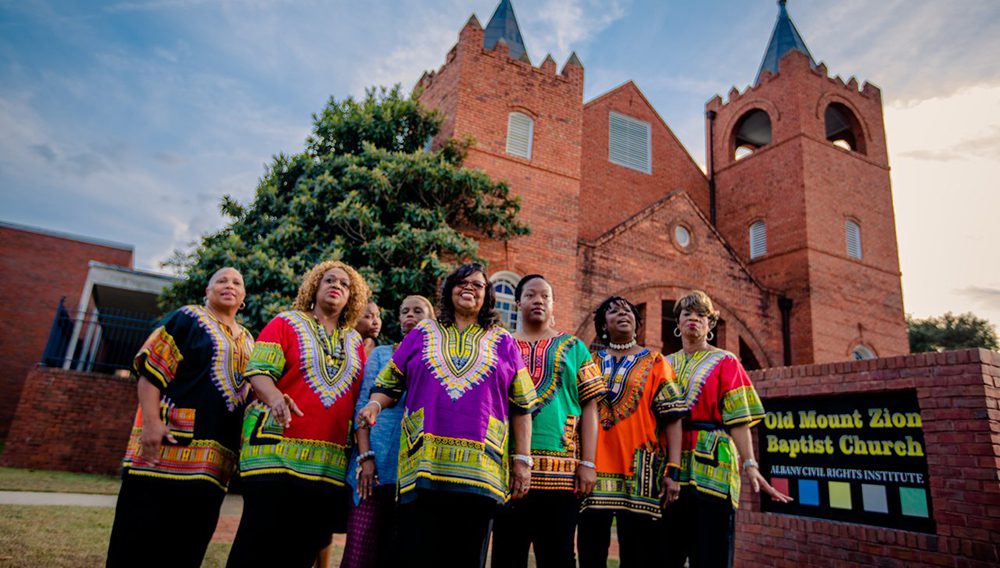
From Montgomery, travel 40 minutes to Tuskegee, home of the Tuskegee Airmen, the country’s first African-American military aviators, who fought in World War II.
Here, you can visit the Butler Chapel AME Zion Church, a 1950s meeting place for people fighting for voting equality in Alabama, and the Tuskegee History Center which traces the region’s civil rights crusade and multicultural roots.
Continue your trip to reach Albany, home of the Albany Movement, a group fighting for voters’ rights and desegregation, and the first mass movement in the civil rights era to fight for the desegregation of an entire community.
Learn more about this historic time at the interactive exhibits at the Albany Civil Rights Institute, where the Freedom Singers give monthly concerts.
- DRIVE TIME: 251kms: 3 hours drive time
9. Albany, Georgia > Midway and Savannah, Georgia
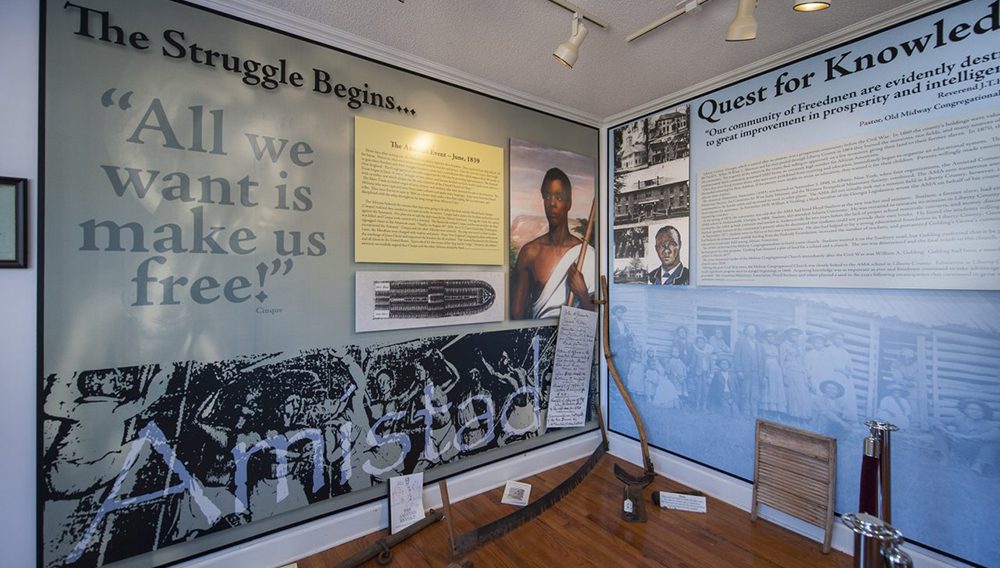
Open the windows and enjoy the views and fresh air of Georgia’s countryside.
While driving on the Atlantic Ocean coast, stop in Midway to visit the museum at Historic Dorchester Academy, a key site where the Southern Christian Leadership Conference trained its teachers and leaders, who then took the message to their home communities.
The final stop today is Savannah, home of the Ralph Mark Gilbert Civil Rights Museum, which tells the story of local African-American history and the Savannah Protest Movement, where students staged sit-ins at downtown lunch counters in 1960, resulting in a boycott of businesses and leading to desegregation.
Stroll around lovely and historic Savannah, so charming with its cobblestone streets, pretty parks and squares, boutiques and trendy restaurants.
- TRAVEL TIME: 361kms: 3 hours and 40mins drive time
10. Savannah, Georgia > Atlanta, Georgia
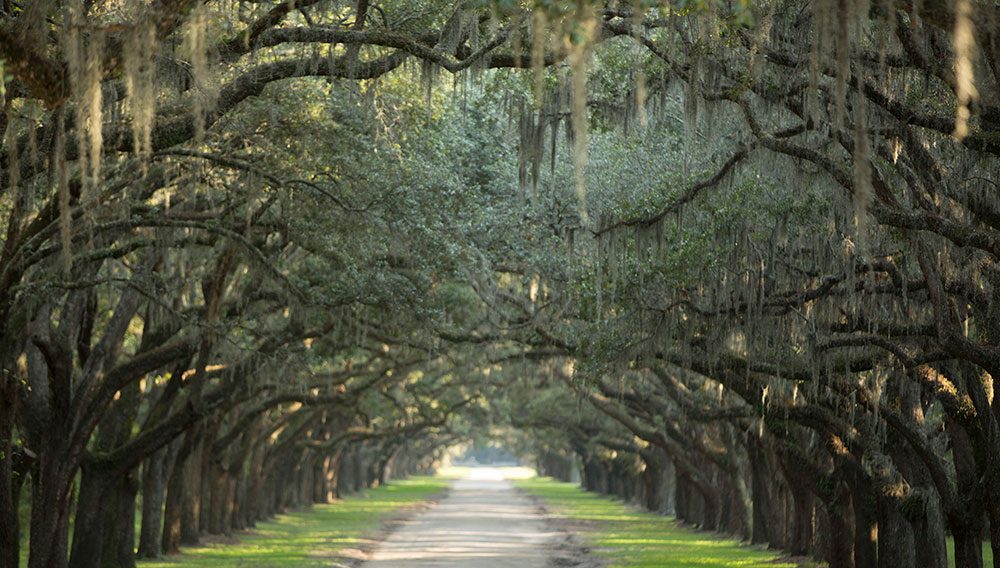
Drive inland to the birthplace of Martin Luther King Jr. in Atlanta and his final resting place at The King Center.
Upon arrival, visit the new Center for Civil and Human Rights, a suitable place to begin your discovery of Atlanta’s rich civil rights history.
While you’re downtown, must-see attractions include the Georgia Aquarium, World of Coca-Cola and Centennial Olympic Park. This cosmopolitan city brims with great restaurants and lively nightlife hotspots.
Explore the wealth of civil rights history in Atlanta, starting at The King Center, and visiting Fire Station No. 6, which was one of the first firehouses in the South to be desegregated.
Listen to some of King’s sermons and speeches at Ebenezer Baptist Church, and then enjoy quiet contemplation at the nearby World Peace Rose Garden and reflecting pool, home to the “Behold” monument, a statue based on an African ritual of lifting a newborn to the skies, and dedicated to the memory of Dr. Martin Luther King Jr.
Visit the Eternal Flame and the crypts of King and his wife, Coretta, and explore the International Civil Rights Hall of Fame, where you can tread in the footprints of civil rights leaders and pioneers.
Spend time in the Sweet Auburn District at the APEX Museum, which traces the African-American experience through videos, photographs and artefacts.
- TRAVEL TIME: 399kms: 3 hours and 30mins drive time
11. Atlanta, Georgia > Anniston and Birmingham, Alabama
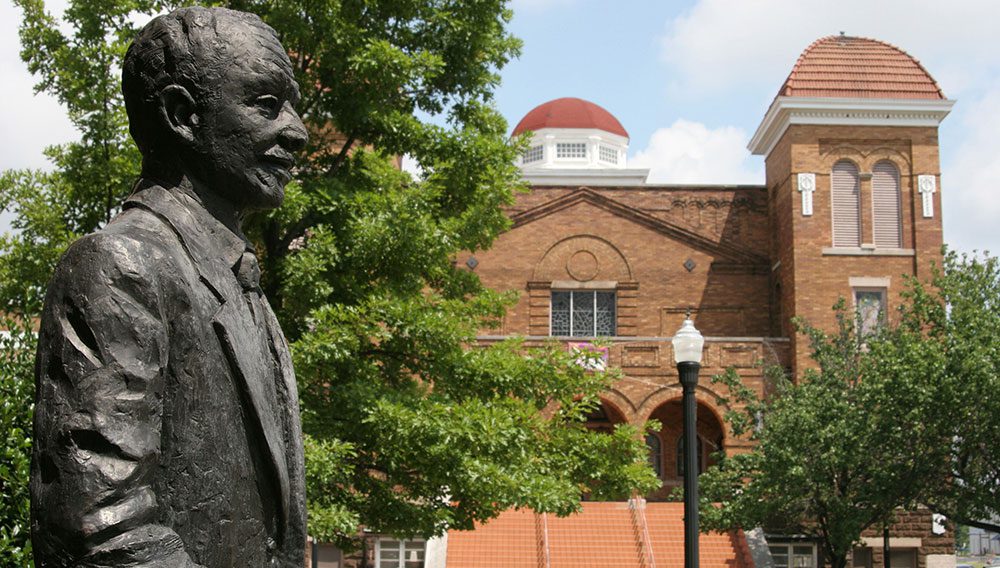
Departing Atlanta, follow the westward route of members of the Congress of Racial Equality who boarded a Greyhound bus in 1961 to challenge segregated seating as part of the Freedom Rides movement.
In Anniston, Alabama, an angry mob attacked the bus and slashed its tires, forcing it to stop outside of town. The bus was set on fire, and the fleeing riders were beaten.
The site is marked with the Freedom Riders National Monument.
Your next stop is Birmingham, a city at the heart of the civil rights movement, most famously Project C, better known as the Birmingham Campaign.
Peaceful lunch counter sit-ins, boycotts and marches were met with such violence that they’re widely accepted as key turning points in the civil rights movement.
Today, the Birmingham Civil Rights Institute tells the story of the city’s role in the struggle for equality.
Across the street, in Kelly Ingram Park, fire hoses and dogs were turned on peaceful protesters; it’s now a site honoring leaders of the civil rights movement with statues and monuments.
The nearby Civil Rights National Monument was established in 2017 to commemorate this important time in U.S. history.
Balance out your historical trip with the various outdoor recreation, dining and entertainment options the city, set in the beautiful Appalachian foothills.
- TRAVEL TIME: 237kms: 2 hours drive time
12. Birmingham, Alabama > Scottsboro, Alabama > Nashville, Tennessee
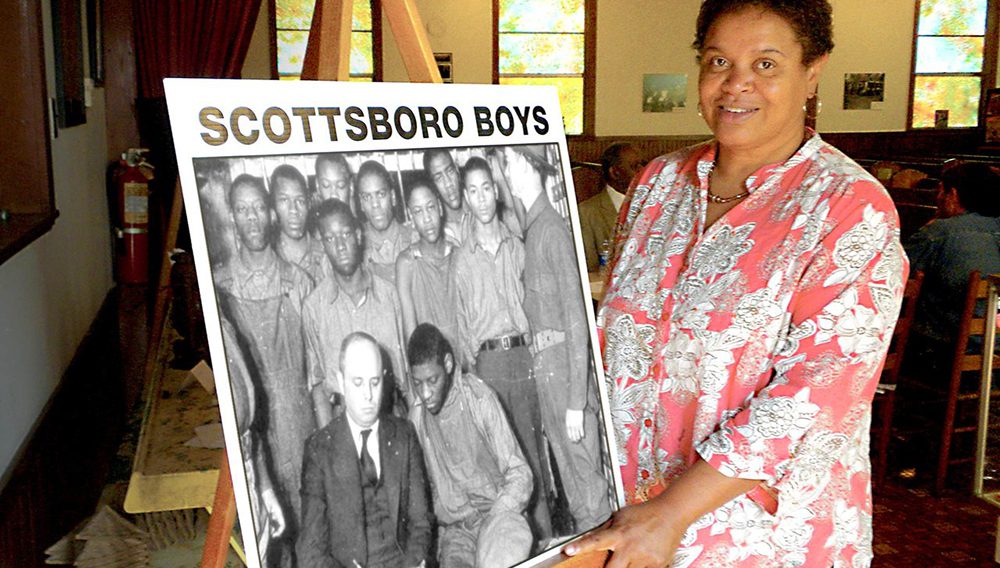
The last stop on your journey is Scottsboro.
This is where nine black teenagers were falsely accused of the sexual assault of two white girls aboard a Southern Railroad freight train from Chattanooga to Memphis, Tennessee, in 1931.
The ensuing trials, convictions, retrials, verdicts, appeals and blatant injustice accorded the boys was the basis for much legal reform for the right to a fair trial.
Visit the Scottsboro Boys Museum & Cultural Center which contains documents and other artefacts that support the trial as the beginning of the civil rights movement.
Now you’re an expert on civil rights history and have perhaps gained a new perspective on the fight for freedom and equality, you are able to make your way back to Nashville, where your outlook-shifting trip began nearly two weeks ago.
- TRAVEL TIME: 308kms: 2 hours and 40mins drive time
Download the complete ‘The Civil Rights History Trail‘ itinerary here!
Get the Road Trip Playlist
This uplifting road trip playlist will have you singing at the top of your voice for freedom, love and revolution.
With some absolute bangers, from John Legend, Black Eyed Peas, Tracy Champman, Jimi Hendrix, Aretha Franklin and more, you’ll be feeling on top of the world and pumped to listen more, learn more and explore more.
Plus, you’ll return home with a newfound sense of optimism for humanity, because, music brings people together in magical ways.
Agents: Download, Escape and Explore GoUSA TV

GoUSA TV is a free premier travel entertainment channel. Watch full episodes, documentaries and films, told from the diverse perspectives of real people across America.
Discover the Queens area of New York City through the diversity of the Latinx diaspora in the series, Americanos, available on GoUSA TV. Explore how Latinx culture brings American cities to life through the stories of those who embrace their roots and shape the future.
With more than 400 authentic and short format videos featuring destinations from all 50 states, 5 territories, and the District of Columbia, there’s never been a better time to get online and enjoy some incredible travel entertainment!
Available for download in the App or Play store and on Apple TV.
More info here.
Agents: Join the USA Discovery Program
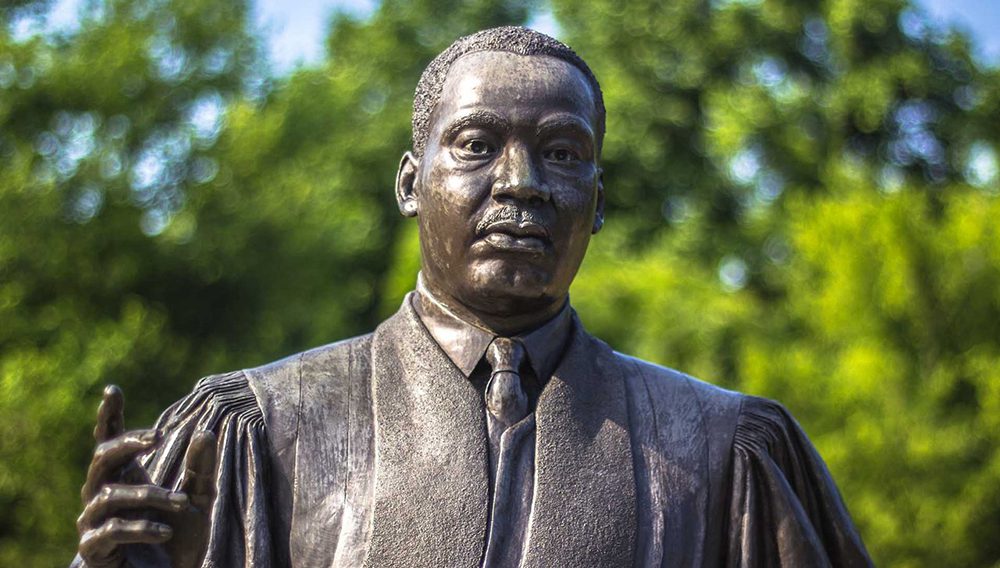
The USA Discovery Program is Brand USA’s official trade training platform for the USA.
Get clicking and complete your Regional Expert badge and skill up in a fun and interactive way on the south east states including the District of Columbia and Virginia and the north east state of Pennsylvania.
Click here to register and get all the knowledge for the USA.
PLUS! Design your own Road Trip with the USA Trip Planner
The Visit USA Trip Planner is an amazing (and free!) tool that matches your personal travel preferences and style.
With over 230 million data points including the best places & times to visit, reviews and hidden gems, this is one smart piece of travel tech.
This little travel genius optimises your itinerary to minimise travel time, checks when attractions are open and even recommends how much time to spend at each stop off. Brilliant!
Finally, it lets you share & collaborate with your fellow road trippers and is easy to add or revise points of interest as you go.
Find out more: Trip-Planner.VisitTheUSA.com
Get all the tools on Brand USA’s Travel Trade Site
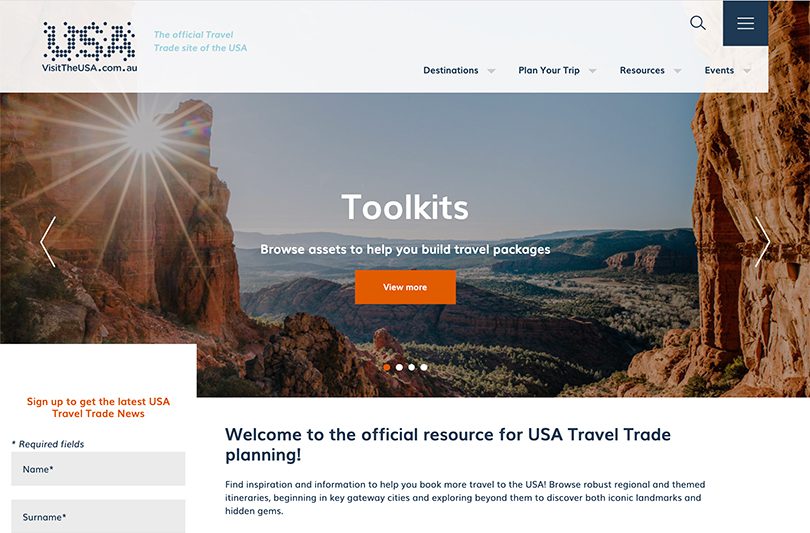
From Trip Planners to Itineraries and the USA Discovery Program and Destination information, Brand USA’s Travel Trade Site for agents has you covered.
This article was brought to you by:

Get Connected with the in-market Brand USA team and other Australian travel agents who love the USA! Get up to date travel information and inspiration and find out what activity Brand USA has planned for the market.



